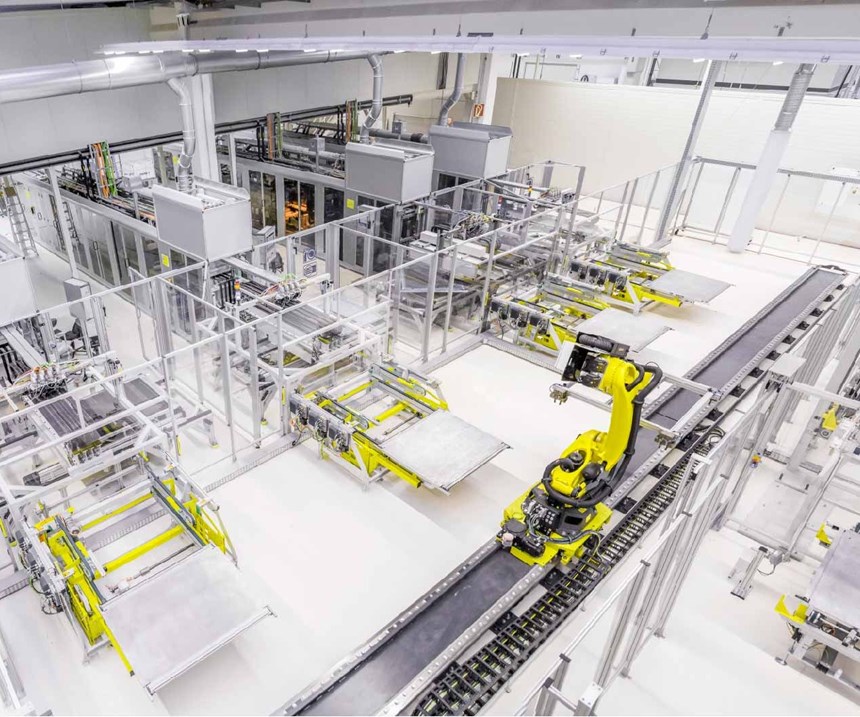Voith wins Lightweight Design Award
Voith’s VRA technology for CFRP production lines is said to reduce waste and thus material costs by depositing carbon fibers close to the final shape.
Voith Composites (Munich, Germany) recently won the Lightweight Construction Award 2018 presented by VDI (The Association of German Engineers, Düsseldorf, Germany) and Carbon Composites e.V. (CCeV, Bavaria, Germany) at the the second Lightweight Construction Congress in Graz, Austria.
Voith’s project, "Highly efficient mass production of CFRP through innovative fiber placement," is a collaboration with Audi AG. With its production site in Garching, Munich, Voith realized for the first time a continuously digitized and automated production line for the manufacturing of CFRP structural components in large numbers. A CFRP rear wall for the new Audi A8 with an innovative direct fiber placement process, the Voith Roving Applicator (VRA), was produced in a fully automated production line.
In order to meet the high quality and cycle time requirements, robust preforming without gaps and wrinkles is essential. For the conception and design of the segmented stamp forming process used, the partners developed their own method for preforming simulation. For the production of the CFRP rear wall, a layer structure with 6-19 carbon-fiber layers was used.
The VRA technology is said to reduce waste and thus material costs by depositing the carbon fibers close to the final shape. During the assembly of the metallic add-on parts, Audi and Voith developed and qualified a fully automated bonding without mechanical pretreatment of the joining partners’ CFRP and metal. This new process is said to save production time and auxiliary materials. The storage technology of the VRA also enables production of small quantities.
Dr. Lars Herbeck, managing director of Voith Composites GmbH & Co. KG, accepted the prize on behalf of the team. Other finalists were an Airbus (Toulouse, France) consortium and MT Aerospace AG (Augsburg, Germany).
Related Content
-
Revisiting the OceanGate Titan disaster
A year has passed since the tragic loss of the Titan submersible that claimed the lives of five people. What lessons have been learned from the disaster?
-
“Structured air” TPS safeguards composite structures
Powered by an 85% air/15% pure polyimide aerogel, Blueshift’s novel material system protects structures during transient thermal events from -200°C to beyond 2400°C for rockets, battery boxes and more.
-
Cutting 100 pounds, certification time for the X-59 nose cone
Swift Engineering used HyperX software to remove 100 pounds from 38-foot graphite/epoxy cored nose cone for X-59 supersonic aircraft.


















